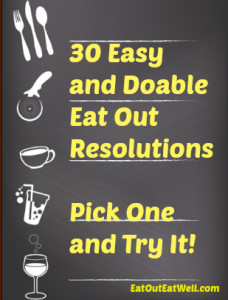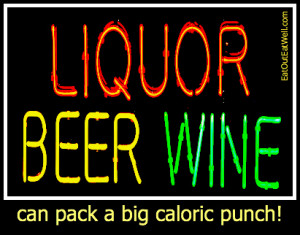 It’s the second week of the New Year. Maybe you’ve decided to work on some new habits – Lose weight (how are you going to do that?), cook at home more (when are you going to do that?), eat less bread, butter, ice cream, candy, you name it (how much less?).
It’s the second week of the New Year. Maybe you’ve decided to work on some new habits – Lose weight (how are you going to do that?), cook at home more (when are you going to do that?), eat less bread, butter, ice cream, candy, you name it (how much less?).
Specificity and baby steps help move you toward your new habit – but something else is key, too: practice. Your brain needs to decide that this new habit, the new behavior, is its default. How does your brain get the message? By you performing – doing – that behavior over and over again.
Remember this: What gets you to Carnegie Hall (or to the podium, or to the awards ceremony)? Practice. Think about this: What makes your new healthy habit stick? Practice.
If you’ve resolved to form new healthy habits, habits you want to keep and that fit in with your lifestyle, you need to keep repeating the new behaviors for that habit over and over again. It’s like learning a language or a new game. You need to keep practicing.
Why? Our brains are lazy. They like to default to what’s easy for them – and usually that’s an old habit (both good ones and bad ones). That default behavior is easy, nice, comfortable, and doesn’t require the extra energy necessary to do something unfamiliar. Doing something that’s very familiar can be done without much thinking or energy — like eating a certain thing everyday at the same time or going for a daily run at the same time and on the same route.
The way to create a new habit and to make it “stick” is to create a new “default” pattern to replace an old one. That requires the repetitive practice of doing the same behavior over and over again – like creating a path through grass or weeds by walking on it day after day.
Some Additional Tips For Forming New Habits
- Try one change at a time. Create one new habit and then begin to work on another. Since our brains are, in a sense, kind of lazy, they don’t like too much disruption or change at a time. They’re used to doing something one way, so pick one change at a time and create a habit around it.
- Be committed and willing to work on your habit (goal). Decide if you’re really willing to make change(s) in your life. Are you serious or half-hearted about what you want to do? “Kinda,” “sorta” goals give you “kinda,” “sorta” results. Realistic, achievable goals produce realistic results.
- Start small and specific. So many of us are guilty of all-or-nothing thinking and overly ambitious goals. Guess what happens? We shoot ourselves in our collective feet and call ourselves failures. Do it often enough and a “no can do” attitude gets solidly embedded. Aim for what you think you can do and keep doing it. That doesn’t mean not trying, it just means scale it to what you think you can accomplish with some effort. If, for example, your aim is to exercise more frequently, schedule three or four days a week at the gym instead of seven. If you would like to eat healthier, try replacing dessert with something else you enjoy, like fruit or yogurt or a very small portion of a favorite indulgence — instead of saying you’re going cold turkey and will never eat a dessert again.
Unhealthy habits develop over time. Working on healthy habits to replace unhealthy ones also requires time. Be patient. And practice.



